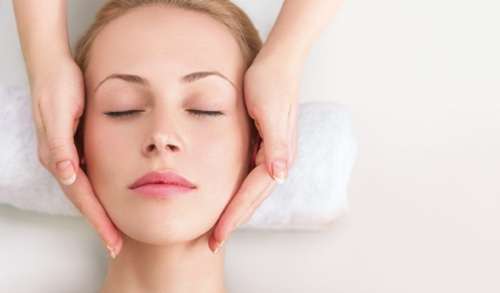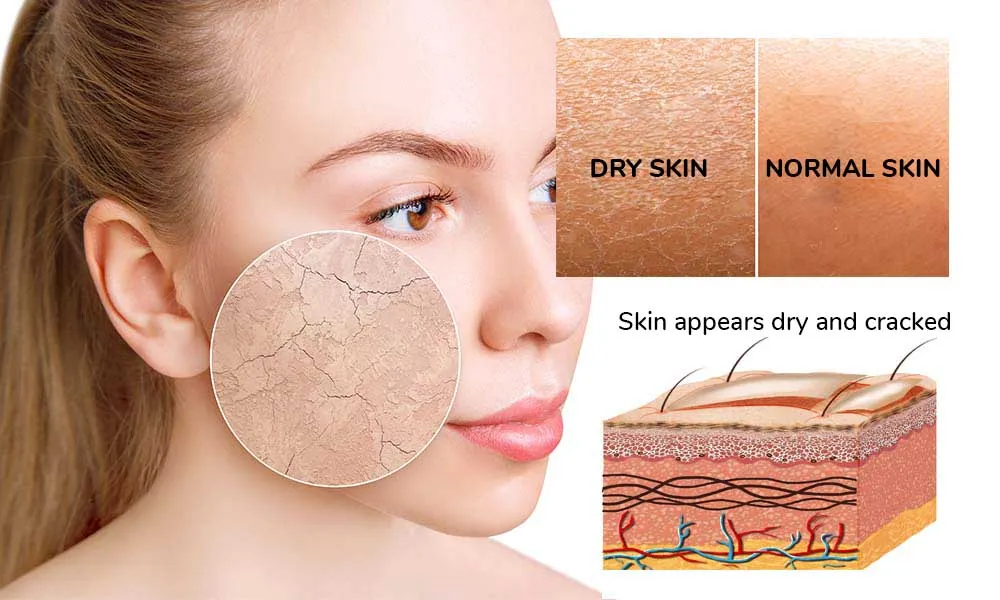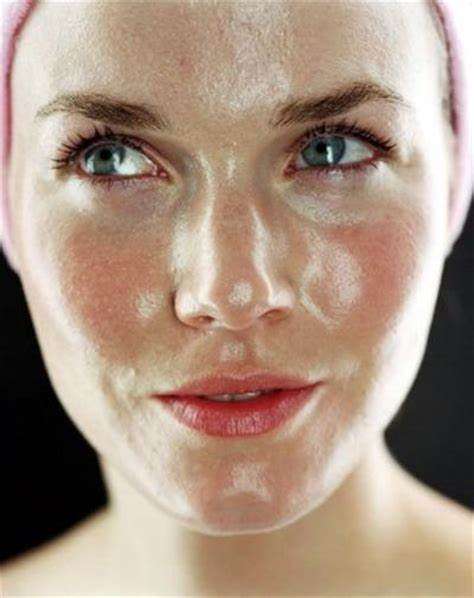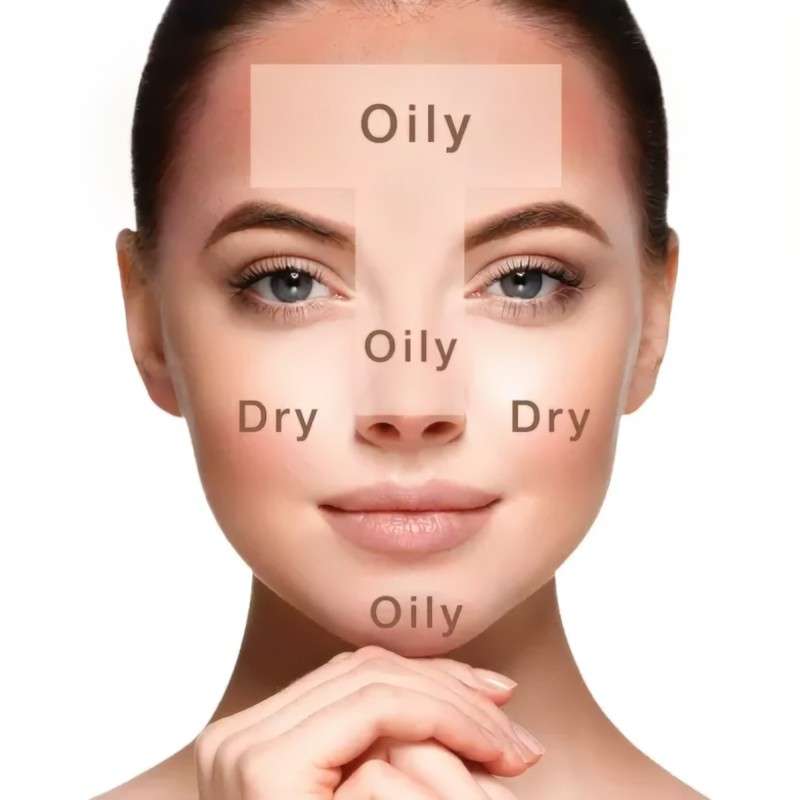
Your skin type is determined by several factors including genetics, age, and environment. Knowing your skin type is important for choosing the best skin care treatments and products. Your skin type influences things such as water retention, sensitivity, and your propensity towards certain skin conditions, such as acne. Skin is often classified into 5 main types:

1. Normal Skin:
Normal skin is well-balanced. It is less likely to suffer from skin conditions and appears clear, radiant, and healthy. Normal skin is more likely used to describe the youthful look of younger people. This type can be portrayed as being one or more of the following:
- Free from skin blemishes
- Fine or invisible pores
- Skin tone is even, clear, and smooth
- Radiant complexion
- Neither too oily or too dry

2. Dry Skin
Certain areas of the body are more prone to dry skin including the hands, arms, legs, palms, and soles of the feet. Dry skin can be a result of genetics or environmental factors. Studies show that women are more prone to dry skin than men. The skin will have a dry, scaly appearance which is due to the lack of moisture content. People who have dry skin should try their best to avoid skin care products that have drying ingredients. Also, they need to be careful of products that strip the skin of sebum. Characteristics of dry skin include the following:
- Skin feels tight and brittle, and lacks elasticity
- Rough skin texture
- Scaling, flaking, and itchiness
- Prone to redness, irritation, and infection
- Chapping and prone to cracking
- Enhances fine lines and wrinkles
To diagnose dry skin, your doctor is likely to examine you and ask about your medical history. During your doctor’s visit be sure to inform your doctor about when you noticed the drying of your skin. Discuss when it started, what hurts or heals it, cleansing routines, and skin care. This will be important information because oftentimes dry skin is a symptom of serious conditions such as dermatitis or psoriasis.

3. Oily Skin
When the production of sebum becomes excessive the result is oily skin. Individuals with an oily skin type are more acne prone and more likely to have skin blemishes. In addition to a shiny complexion, oily skin is usually accompanied by larger more noticeable pores.
Oily skin is heavily influenced by genetics. Other factors such as hormonal changes (pregnancy or puberty), stress, medications, diet, and skin care products may contribute to oily skin. These are some of the signs and symptoms of oily skin:
- Pores look enlarged and are visible
- Skin looks thicker and paler
- Acne-prone in the T- Zone which includes the forehead, nose, and chin
- Oily skin looks plumper and less aged

4. Sensitive skin
Most people who have sensitive skin notice occasional or frequent itching, burning, and stinging of patches of skin. Many individuals with sensitive skin cite worsening symptoms due to environmental factors. Signs of sensitive skin come from the breakdown of your skin’s protective barrier. This can be caused by the environment, dehydration, or an underlying condition. Many of these signs are included in one or more of the following:
- Redness
- Peeling skin
- Rough, flaky patches
- Open sores or yellow crust over the skin
- Wrinkled, rough texture

5. Combination Skin
Combination skin is the most common skin type. Many people have it and many people suffer from having it. This skin type is characterized by having a mix of oily and dry skin. This is usually in different areas of the face. They have an over-production of sebum around the forehead, nose, and chin areas. Dry skin typically affects the cheeks, mouth, and eyes due to a lack of sebum production.

4 thoughts on “How To Define Your Skin Type Classification”